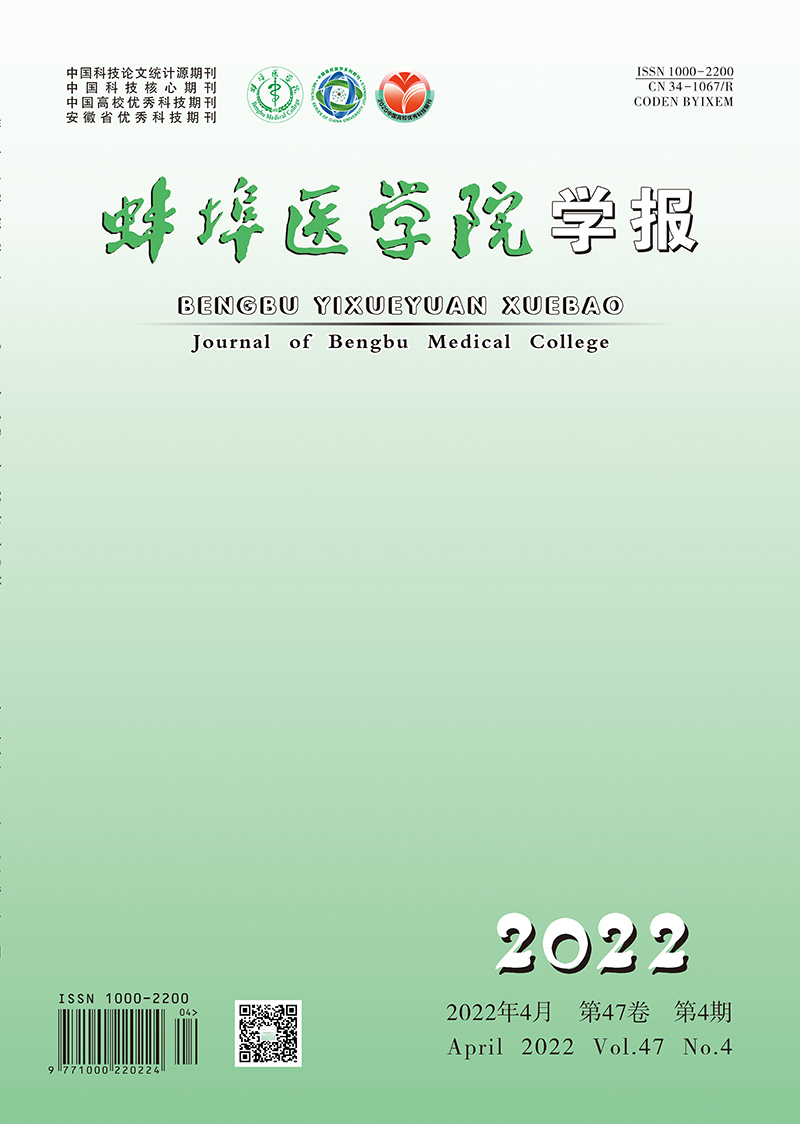-
健康素养是指个人获得和理解基本健康信息和服务,并运用这些信息和服务作出正确的决策,以维持和促进健康的能力[1]。健康素养是健康的重要决定因素[2],是经济社会发展的综合反映,提升公众健康素养是应对慢性非传染性疾病、新发再发传染病疾病的主要策略,是提高公众健康水平的根本途径。医学生作为未来医疗卫生系统的预备人才,是卫生事业发展的中坚力量,需先于普通公民具备更高水平的健康素养[3-4]。本文通过对医学院校健康素养现状的调查,旨在了解医学生健康素养相关知识现状,为有针对性地开展健康素养干预工作提供参考依据。
HTML
-
采用分层整群抽样方法发放调查问卷,选取安徽省某医科大学为研究对象,根据专业分层,选取了临床医学、全科医学、护理学三个专业。涵盖这些专业的各个年级,由大学年级(大四)均在外实习,故无大四年级。共发放问卷850份,有效问卷765份,有效率90.0%。
-
(1) 个人基本情况:包含被调查医学生的年级、年龄、性别、是否独生子女、民族、生源地、家庭平均月收入以及月生活费、父母文化程度等。(2)健康素养调查问卷:采用《2009中国公民健康素养调查问卷》,包括健康素养知识理念(18题)、健康生活方式和行为(14题)及健康技能(5题)三个维度。单选题回答正确得1分,所有单选题全对得1分,多选题选项正确回答率≥60%得1分,选错或不知道为0分,共计37分。所有问题回答正确率≥80%的医学生视为具有健康素养。
-
本次问卷采用问卷星的形式,在年级辅导员的帮助下,利用班会时间发布问卷星二维码和链接。参与的调查员均经过统一培训。调查对象在20 min左右独立完成问卷,由调查员认真核对后提交。
-
采用t检验、方差分析和q检验。
1.1. 研究对象
1.2. 研究工具
1.3. 调查方法
1.4. 统计学方法
-
有效问卷765份(90.0%)。其中护理专业335人(43.8%),临床专业276人(36.1%),全科专业154人(20.1%);大学一年级(大一)229人(29.9%),大学二年级(大二)418人(54.7%),大学三年级(大三)98人(12.8%),大学五年级(大五)20人(2.6%);男生230人(30.1%),女生535人(69.9%);独生子女180人(23.5%),非独生子女585人(76.5%);汉族754人(98.6%),回族7人(1.0%),满族2人(0.2%),其他2人(0.2%);来自城市的有105人(13.7%),来自乡镇的有660人(86.3%);家庭平均月收入为400~1 000元45人(5.9%),1 000~3 000元160人(20.9%),3 000~5 000元242人(31.6%),5 000~7 000元175人(22.9%),>7 000元143人(18.7%);学生每月生活费400元以下18人(2.4%),400~500元24人(3.1%),500~600元51人(6.7%),600~700元53人(6.9%),700~800元120人(15.7%),>800元499人(65.2%);父亲受教育程度为硕士及以上的7人(0.9%),为大学的34人(4.5%),为高中或职高或中专的193人(25.2%),为初中的358人(46.8%),为小学159人(20.8%),为文盲的14人(1.8%);母亲受教育程度硕士及以上的5人(0.7%),为大学的23人(3.0%),为高中或职高或中专的122人(15.9%),为初中的292人(38.2%),为小学的269人(34.0%),为文盲的63人(8.2%)。
-
该医学院校大学生健康素养总体具备率16.5%,其中健康素养知识理念具备率达29.3%,健康生活方式与行为具备率达5.4%,健康技能具备率达63.0%。
-
不同专业间比较显示,临床专业学生的健康素养总评分和3个维度评分均高于护理、全科专业(P < 0.01),护理与全科学生的健康素养评分差异无统计学意义(P>0.05);不同年级间比较显示,随着年级的升高学生健康素养总评分和3个维度评分均呈升高趋势(P < 0.01);不同性别间比较显示,女学生在健康素养总评分和健康生活方式与行为上评分均高于男生(P < 0.05和P < 0.01),在健康素养知识理念和健康技能上的男女生得分差异均无统计学意义(P>0.05);不同民族间比较显示,汉族学生健康素养总水平、健康素养知识理念、健康生活方式与行为上评分高于回族、满族学生(P < 0.01)。不同家庭平均月收入间比较显示,随着学生家庭平均月收入的升高健康素养总水平和健康素养知识理念上评分呈升高趋势(P < 0.05);是否独生子女、生源地、月生活费、父母受教育程度对大学生健康素养评分的影响均无统计学意义(P>0.05)(见表 1)。
观察项目 n 总分 健康素养知识理念 健康生活方式与行为 健康技能 专业 护理 335 25.03±4.27 12.73±2.51 8.70±1.93 3.60±0.94 临床 276 27.23±3.25* 13.87±1.96* 9.46±1.67* 3.91±0.74* 全科 154 24.29±5.90 12.58±3.12 8.10±2.51 3.61±1.08 F — 29.37 20.42 25.18 10.06 P — < 0.01 < 0.01 < 0.01 < 0.01 MS组内 — 19.075 6.196 4.283 0.833 年级 大一 229 23.87±4.66 12.24±2.64 8.14±2.12 3.49±0.99 大二 418 26.23±3.88 13.31±2.26 9.13±1.83 3.80±0.85 大三 98 26.88±5.43 13.90±2.89 9.08±2.33 3.90±0.94 大五 20 28.70±2.49 15.10±1.55 10.10±1.33 3.50±0.76 F — 21.43 18.28 15.82 7.47 P — < 0.01 < 0.01 < 0.01 < 0.01 MS组内 — 56.853 16.879 11.182 3.359 性别 男 230 25.13±5.19 12.98±2.77 8.39±2.30 3.77±0.98 女 535 25.90±4.14 13.17±2.43 9.05±1.88 3.69±0.88 t — 2.17 0.94 4.18 1.16 P — < 0.05 >0.05 < 0.01 >0.05 独生子女 是 180 25.57±5.29 13.06±2.91 8.71±2.25 3.81±0.99 否 585 25.70±4.22 13.13±2.40 8.89±1.97 3.68±0.89 t — 0.34 0.33 1.05 1.59 P — >0.05 >0.05 >0.05 >0.05 民族 汉族 754 25.73±4.40 13.14±2.47 8.87±2.02 3.72±0.91 回族 7 20.29±8.92 10.29±5.88 6.86±3.08 3.14±0.90 满族 2 20.50±7.78 10.50±4.95 6.50±0.71 3.50±2.12 其他 2 29.00±2.83 15.00±1.41 10.50±0.71 3.50±0.71 F — 4.71 4.06 3.62 0.99 P — < 0.01 0.01 0.01 >0.05 MS组内 — 194.343 55.178 35.689 16.125 生源地 城市 105 26.31±4.46 13.42±2.59 9.08±1.86 3.82±0.93 乡镇 660 25.57±4.49 13.06±2.52 8.82±2.06 3.69±0.91 t — 1.58 1.35 1.22 1.31 P — >0.05 >0.05 >0.05 >0.05 家庭平均月收入/元 400~ 45 23.51±6.41 11.80±3.46 8.29±2.72 3.42±0.99 1 000~ 160 25.54±4.15 13.00±2.39 8.84±1.88 3.71±0.98 3 000~ 242 25.71±4.15 13.12±2.33 8.86±1.99 3.72±0.84 5 000~ 175 25.95±4.55 13.33±2.60 8.89±2.05 3.73±0.92 7 000~ 143 26.10±4.49 13.35±2.49 8.99±2.01 3.76±0.93 F — 3.16 3.80 1.03 1.27 P — < 0.05 < 0.05 >0.05 >0.05 MS组内 — 25.955 6.089 5.474 1.075 月生活费/元 0~ 18 23.00±8.36 11.61±4.59 7.89±3.10 3.50±1.20 400~ 24 26.63±4.93 13.63±2.84 9.38±1.77 3.63±0.97 500~ 51 25.45±5.03 12.92±2.72 8.96±2.17 3.57±0.86 600~ 53 26.15±3.49 13.08±2.07 9.26±1.76 3.81±0.68 700~ 120 25.28±4.40 12.91±2.73 8.73±1.94 3.63±0.86 800~ 499 25.79±4.32 13.21±2.38 8.83±2.03 3.75±0.94 F — 1.90 1.84 1.68 0.93 P — >0.05 >0.05 >0.05 >0.05 MS组内 — 26.970 10.406 16.468 1.535 父亲受教育程度 硕士及以上 7 25.43±8.40 13.14±4.56 8.86±2.85 3.43±1.13 大学 34 25.59±3.49 13.41±2.19 8.62±1.79 3.56±0.89 高中/职高/中专 193 26.13±4.40 13.40±2.39 8.96±2.03 3.76±1.03 初中 358 25.50±4.73 13.00±2.66 8.78±2.10 3.72±0.89 小学 159 25.66±3.74 13.03±2.16 8.91±1.86 3.72±0.80 文盲 14 24.14±6.83 12.00±4.11 8.86±2.71 3.29±0.83 F — 1.32 0.31 1.06 0.83 P — >0.05 >0.05 >0.05 >0.05 MS组内 — 20.693 32.823 1.043 4.273 母亲受教育程度 硕士及以上 5 22.40±10.67 11.40±5.86 8.00±3.54 3.00±1.41 大学 23 24.30±5.30 12.74±3.22 8.04±2.29 3.52±0.99 高中/职高/中专 122 25.98±4.26 13.28±2.20 8.93±2.11 3.77±1.02 初中 292 25.67±4.82 13.07±2.81 8.87±2.01 3.73±0.90 小学 260 25.71±3.81 13.18±2.12 8.83±1.94 3.70±0.87 文盲 63 25.71±4.96 12.92±2.76 9.10±2.18 3.70±0.85 F — 1.07 0.79 1.12 0.95 P — >0.05 >0.05 >0.05 >0.05 MS组内 — 93.196 28.491 11.090 4.104 q检验:与护理专业比较*P < 0.05
2.1. 一般资料
2.2. 健康素养能力具备现况
2.3. 健康素养得分的影响因素分析
-
本次调查结果显示,安徽省某医学院校大学生健康素养具备率为16.73%,高于2017年全国水平(14.18%),低于2018年全国水平(17.06%)[5]。从健康素养三个维度的具备率来看,该医学院校大学生具有良好的健康技能素养(63.0%),远高于2018全国居民健康技能素养水平(18.68%);但其健康生活方式与行为具备率最低,仅有5.4%,与杨慧等[6-9]研究结果一致。虽然医学院校很注重健康知识的传授,但当代大学生熬夜现象非常普遍,生活作息不规律,体育运动匮乏以及存在抽烟酗酒等不良生活行为。说明知晓和掌握健康知识不一定能转化为健康行为,健康知识只是树立科学正确的健康理念,是形成健康行为和良好生活习惯的基础,从知识到行为需要经过很多不同的阶段,是一个漫长的过程[10]。因此,提高医学院校的健康素养,不仅是健康知识的普及,更应该从不良生活方式入手,提高健康行为水平。
-
本研究发现,专业、年级、性别、民族、家庭平均月收入是影响健康素养水平的因素。临床医学的健康素养水平高于护理和全科医学,这可能是因为各专业开设的课程方向不同,临床医学开设的课程全面而深入,更多的关注健康意识的培养和健康行为的形成。男生的健康素养水平低于女生,这与侯娅婕等[11]的调查一致,但与梁玉猛等[12]的研究结果不一致。说明女生更注重健康知识的积累,更懂得健康的重要性,同时也与女生比男生注重自身形象有一定的关系。研究显示,大一学生的健康素养水平最低,可能与大一学习的知识内容少和接触的健康理念匮乏有关。汉族的健康素养水平高于回族、满族,汉族对健康的投入力度大,从小孩子抓起,让其培养健康的意识,对健康的重视程度远高于回族、满族。家庭平均月收入<1 000元的,其健康素养水平相对较低,与李秀兰等[13-14]研究结果一致, 收入相对较低的家庭更加注重对基本生活需求的满足,而忽略了对健康的关注。
-
总体来看,医学院校大学生健康素养现状不容乐观。医学院校应该增设相应课程引导医学生用正确的方法获取需要的健康信息,并鼓励他们将得到的信息分享给别人,并系统学习和掌握健康的知识和技能,进一步提高医学生健康素养水平[15]。可针对低年级加入健康选修课,罗春花[16]的研究表明, 健康选修课是受高校学生喜爱的健康知识传播形式之一,同时在入学教育过程中举办以健康为主题的社团活动、知识竞赛、讲座等。男女生健康素养水平的不同,提示在健康素养培养时应考虑到医学生的性别差异[17]。针对少数民族的学生,可通过编写少数民族语言的健康素养宣传手册和制作相关视频来提高其健康素养水平。






 DownLoad:
DownLoad: